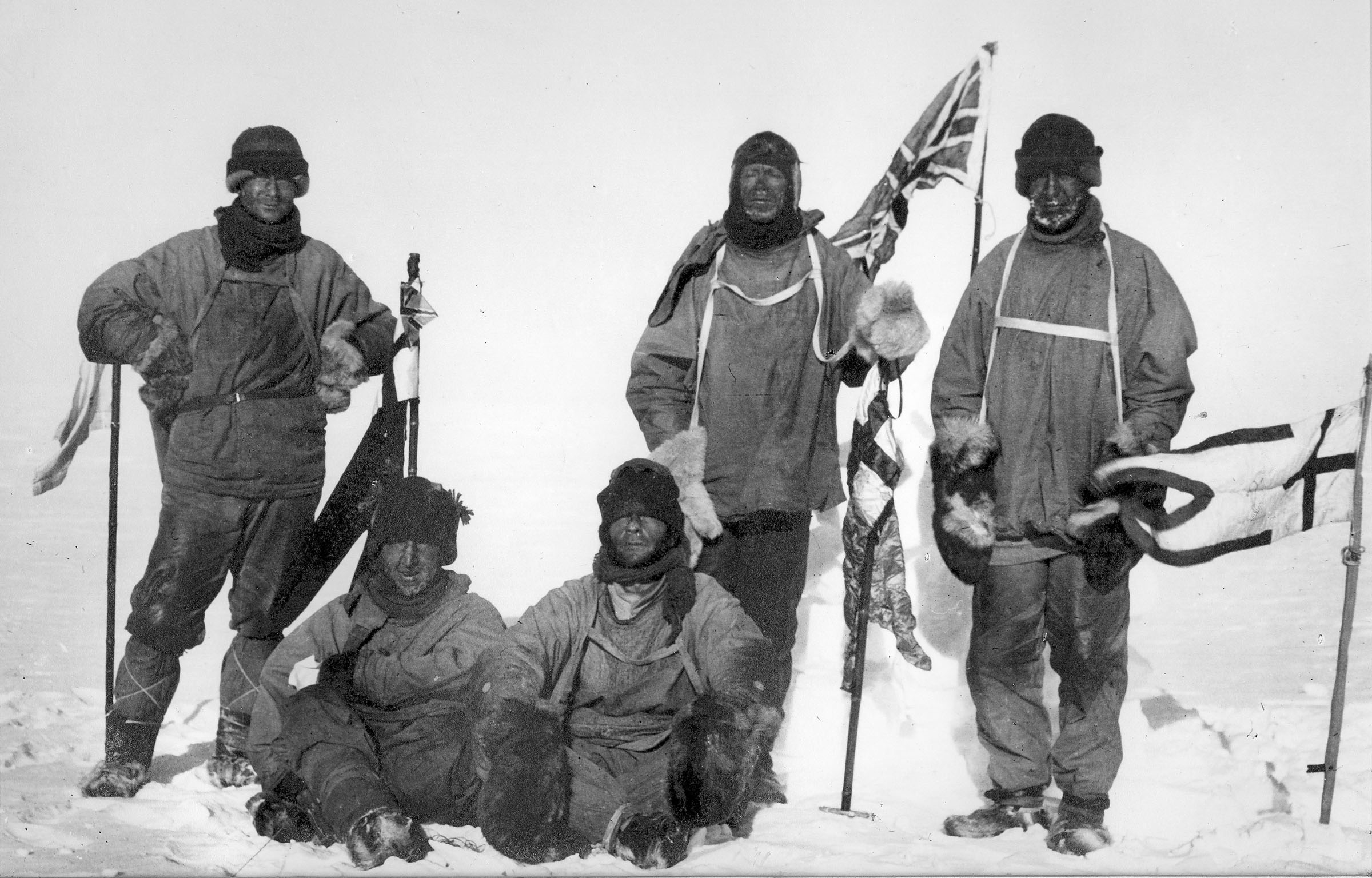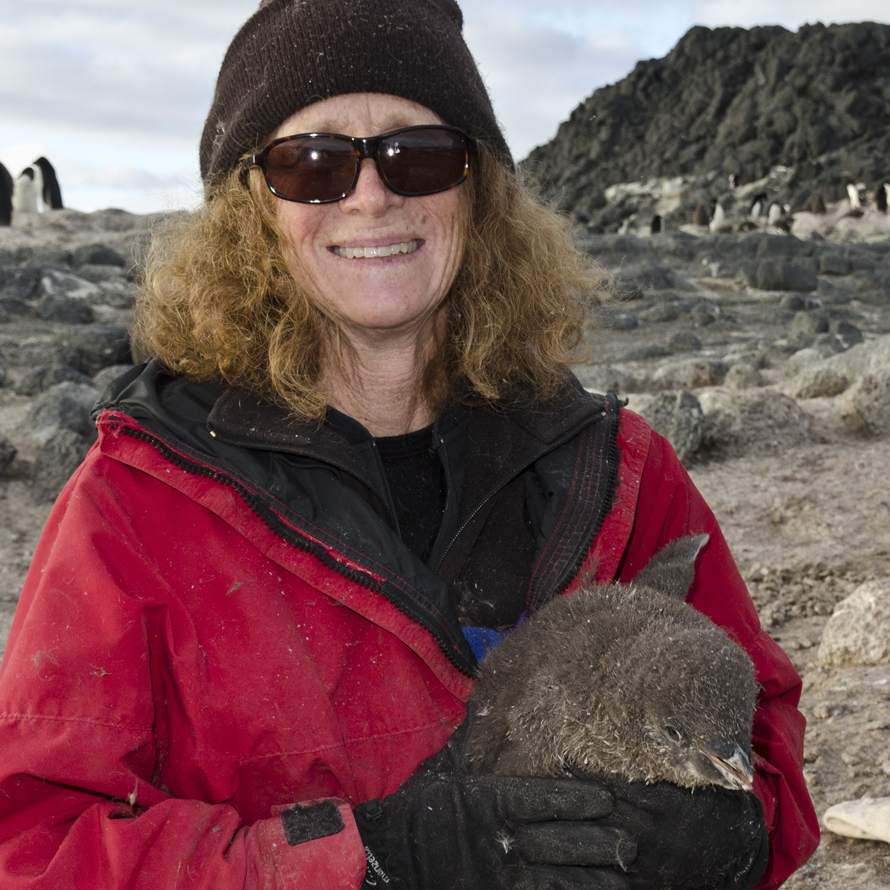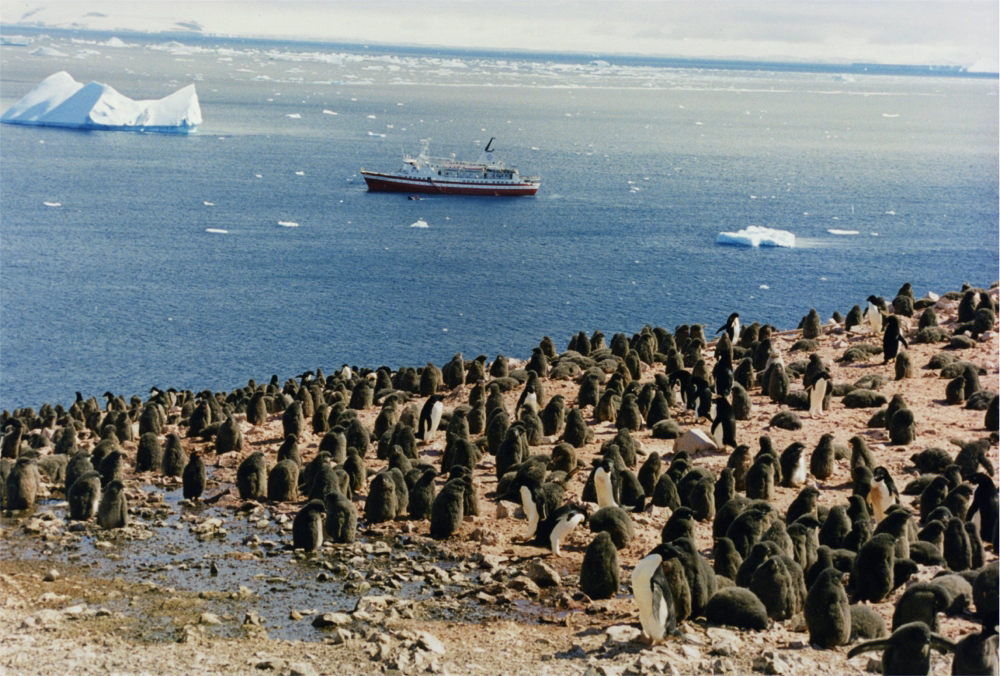|
Cape Royds
Cape Royds () is a dark rock cape forming the western extremity of Ross Island, facing on McMurdo Sound, Antarctica. It was discovered by the British National Antarctic Expedition (BrNAE) (1901–1904) and named for Lieutenant Charles Royds, Royal Navy, who acted as meteorologist on the expedition. Royds subsequently rose to become an Admiral and was later Commissioner of the Metropolitan Police, London. The cape is the site of Shackleton's Hut, the expedition camp of the British Antarctic Expedition, 1907–09. Shackleton's Hut Shackleton's Hut (77.552929°S 166.168286°E) is a historical site near Cape Royds, Ross Island, Antarctica, where the explorer Ernest Shackleton built a hut that housed his party during the winter of 1908. When Shackleton went into McMurdo Sound in 1908, having failed to land on King Edward VII Land, he decided to build a hut at Cape Royds, a small promontory twenty-three miles north of Hut Point where Scott had stayed during the Discove ... [...More Info...] [...Related Items...] OR: [Wikipedia] [Google] [Baidu] |
Antarctica
Antarctica () is Earth's southernmost and least-populated continent. Situated almost entirely south of the Antarctic Circle and surrounded by the Southern Ocean (also known as the Antarctic Ocean), it contains the geographic South Pole. Antarctica is the fifth-largest continent, being about 40% larger than Europe, and has an area of . Most of Antarctica is covered by the Antarctic ice sheet, with an average thickness of . Antarctica is, on average, the coldest, driest, and windiest of the continents, and it has the highest average elevation. It is mainly a polar desert, with annual Climate of Antarctica#Precipitation, precipitation of over along the coast and far less inland. About 70% of the world's freshwater reserves are frozen in Antarctica, which, if melted, would raise global sea levels by almost . Antarctica holds the record for the Lowest temperature recorded on Earth, lowest measured temperature on Earth, . The coastal regions can reach temperatures over in the ... [...More Info...] [...Related Items...] OR: [Wikipedia] [Google] [Baidu] |
2006 World Monuments Watch
The World Monuments Watch is a flagship advocacy program of the New York City, New York-based private non-profit organization World Monuments Fund (WMF) that is dedicated to Historic preservation, preserving the cultural heritage, historic, artistic, and architectural heritage around the world. Selection process Every two years, it publishes a select list known as the Watch List of 100 Most Endangered Sites that is in urgent need of preservation funding and protection. The sites are nominated by governments, conservation professionals, site caretakers, non-government organizations (NGOs), concerned individuals, and others working in the field. An independent panel of international experts then select 100 candidates from these entries to be part of the Watch List, based on the significance of the sites, the urgency of the threat, and the viability of both advocacy and conservation solutions. For the succeeding two-year period until a new Watch List is published, these 100 sites can a ... [...More Info...] [...Related Items...] OR: [Wikipedia] [Google] [Baidu] |
United States Board On Geographic Names
The United States Board on Geographic Names (BGN) is a Federal government of the United States, federal body operating under the United States Secretary of the Interior. The purpose of the board is to establish and maintain uniform usage of geography, geographic names throughout the federal government of the United States. History Following the American Civil War, more and more American pioneer, American settlers began moving westward, prompting the Federal government of the United States, U.S. federal government to pursue some sort of consistency for referencing landmarks on maps and in official documents. As such, on January 8, 1890, Thomas Corwin Mendenhall, superintendent of the United States Coast and Geodetic Survey Office, wrote to 10 noted geographers "to suggest the organization of a Board made up of representatives from the different Government services interested, to which may be referred any disputed question of geographical orthography." President Benjamin Harrison si ... [...More Info...] [...Related Items...] OR: [Wikipedia] [Google] [Baidu] |
British Antarctic Expedition, 1910–13
The ''Terra Nova'' Expedition, officially the British Antarctic Expedition, was an expedition to Antarctica which took place between 1910 and 1913. Led by Captain Robert Falcon Scott, the expedition had various scientific and geographical objectives. Scott wished to continue the scientific work that he had begun when leading the ''Discovery'' Expedition from 1901 to 1904, and wanted to be the first to reach the geographic South Pole. He and four companions attained the pole on 17 January 1912, where they found that a Norwegian team led by Roald Amundsen had preceded them by 34 days. Scott's party of five died on the return journey from the pole; some of their bodies, journals, and photographs were found by a search party eight months later. The expedition, named after its supply ship, was a private venture financed by public contributions and a government grant. It had further backing from the Admiralty, which released experienced seamen to the expedition, and from the Royal ... [...More Info...] [...Related Items...] OR: [Wikipedia] [Google] [Baidu] |
Ross Island Map USGS 250k
Ross may refer to: People and fictional characters * Ross (name), including a list of people and fictional characters with the surname or given name Ross, as well as the meaning * Clan Ross, a Highland Scottish clan Places Antarctica * Ross Sea * Ross Ice Shelf * Ross Dependency * Ross Island Ireland *"Ross", a common nickname for County Roscommon * Ross, County Mayo, a townland bordering Moyne Townland * Ross, County Westmeath, a townland in Noughaval civil parish * Diocese of Ross (Ireland), West Cork United Kingdom * Ross, Northumberland, England, a village * Ross, Scottish Borders, a hamlet * Ross-on-Wye, England * Ross, Scotland, a region of Scotland and former earldom * County of Ross, Scotland * Diocese of Ross (Scotland) United States * Ross, Arkansas, an unincorporated community * Ross, California, a town * Ross, Indiana, an unincorporated community * Ross, Iowa, an unincorporated community * Ross, Minnesota, an unincorporated community * Ross, North Dakota, a ... [...More Info...] [...Related Items...] OR: [Wikipedia] [Google] [Baidu] |
Watermelon Snow
Watermelon snow, also called snow algae, pink snow, red snow, or blood snow, is a phenomenon caused by ''Chlamydomonas nivalis'', a species of green algae containing a secondary red carotenoid pigment (astaxanthin) in addition to chlorophyll. Unlike most species of fresh-water algae, this species appears to be Psychrophilic, cryophilic (cold-loving) and thrives in freezing water. This type of snow is common during the summer in alpine and coastal polar regions worldwide, such as the Sierra Nevada (U.S.), Sierra Nevada of California. Here, at altitudes of 10,000 to 12,000 feet (3,000–3,600 m), the temperature is cold throughout the year, and so the snow has lingered from winter storms. Compressing the snow by stepping on it or making snowballs leaves it looking red. Walking on watermelon snow often results in getting bright red soles and pink trouser cuffs. Snow algae dominates glacial biomass immediately after the onset of melting, and its pigmentation can significantly dar ... [...More Info...] [...Related Items...] OR: [Wikipedia] [Google] [Baidu] |
Algae
Algae ( , ; : alga ) is an informal term for any organisms of a large and diverse group of photosynthesis, photosynthetic organisms that are not plants, and includes species from multiple distinct clades. Such organisms range from unicellular microalgae, such as cyanobacteria, ''Chlorella'', and diatoms, to multicellular macroalgae such as kelp or brown algae which may grow up to in length. Most algae are aquatic organisms and lack many of the distinct cell and tissue types, such as stomata, xylem, and phloem that are found in embryophyte, land plants. The largest and most complex marine algae are called seaweeds. In contrast, the most complex freshwater forms are the Charophyta, a Division (taxonomy), division of green algae which includes, for example, ''Spirogyra'' and stoneworts. Algae that are carried passively by water are plankton, specifically phytoplankton. Algae constitute a Polyphyly, polyphyletic group because they do not include a common ancestor, and although Eu ... [...More Info...] [...Related Items...] OR: [Wikipedia] [Google] [Baidu] |
Type Locality (biology)
In biology, a type is a particular wikt:en:specimen, specimen (or in some cases a group of specimens) of an organism to which the scientific name of that organism is formally associated. In other words, a type is an example that serves to anchor or centralizes the defining features of that particular taxon. In older usage (pre-1900 in botany), a type was a taxon rather than a specimen. A taxon is a scientifically named grouping of organisms with other like organisms, a set (mathematics), set that includes some organisms and excludes others, based on a detailed published description (for example a species description) and on the provision of type material, which is usually available to scientists for examination in a major museum research collection, or similar institution. Type specimen According to a precise set of rules laid down in the International Code of Zoological Nomenclature (ICZN) and the ''International Code of Nomenclature for algae, fungi, and plants'' (ICN), the ... [...More Info...] [...Related Items...] OR: [Wikipedia] [Google] [Baidu] |
Jean Pennycook
Jean Pennycook is an American educator and zoologist specializing in Antarctic Adélie penguins. She is based in Cape Royds, an Antarctic Specially Protected Area which hosts a stable population of Adélie penguins. Career Pennycook first came to Antarctica in 1999 as part of a team from the New Mexico Institute of Mining and Technology, who were researching Mount Erebus, a volcano on Ross Island. She publicized scientific research in Antarctica using several science outreach methods, including online journal entries and postcards, video conferences with schoolchildren, and a documentary about the effect of climate change on penguins. Pennycook and her fellow researcher David Ainley run an educational website, ''Penguin Science'', which summarizes the research team's work and aims to attract future scientists to the field. Pennycook has supervised interns in the Polar Internship Program, which aims to enable students of underrepresented racial or social groups to visit Antarctica ... [...More Info...] [...Related Items...] OR: [Wikipedia] [Google] [Baidu] |
Polynya
A polynya () is an area of open water surrounded by sea ice. It is now used as a geographical term for an area of unfrozen seawater within otherwise contiguous pack ice or fast ice. It is a loanword from the Russian language, Russian (), which refers to a natural ice hole and was adopted in the 19th century by polar explorers to describe navigable portions of the sea. There are two main types of polynyas: coastal polynyas, which can be found year-round near the Antarctic and Arctic coasts and are mainly created by strong winds pushing the ice away from the coast, and mid-sea or open-ocean polynyas, which may be found more sporadically in the middle of ice pack in certain locations, especially around Antarctica. These locations are generally preconditioned by certain oceanic dynamics. One of the most famous mid-sea polynyas is the Weddell Polynya, also known as the Maud Rise Polynya, which occurs in the Lazarev Sea over the Maud Rise seamount. It was first spotted in September ... [...More Info...] [...Related Items...] OR: [Wikipedia] [Google] [Baidu] |
Bird Colony
A bird colony is a large congregation of individuals of one or more species of bird that nest or roost in proximity at a particular location. Many kinds of birds are known to congregate in groups of varying size; a congregation of nesting birds is called a breeding colony. Colonial nesting birds include seabirds such as auks and albatrosses; wetland species such as herons; and a few passerines such as weaverbirds, certain blackbirds, and some swallows. A group of birds congregating for rest is called a communal roost. Evidence of colonial nesting has been found in non- neornithine birds (Enantiornithes), in sediments from the Late Cretaceous (Maastrichtian) of Romania. Variations on colonial nesting in birds Approximately 13% of all bird species nest colonially. Nesting colonies are very common among seabirds on cliffs and islands. Nearly 95% of seabirds are colonial, leading to the usage, seabird colony, sometimes called a rookery. Many species of terns nest in colonies ... [...More Info...] [...Related Items...] OR: [Wikipedia] [Google] [Baidu] |
Adélie Penguin
The Adélie penguin (''Pygoscelis adeliae'') is a species of penguin common along the entire coast of the Antarctic continent, which is the only place where it is found. It is the most widespread penguin species, and, along with the emperor penguin, is the most southerly distributed of all penguins. It is named after Adélie Land, in turn, named for Adèle Dumont d'Urville, who was married to French explorer Jules Dumont d'Urville, who first discovered this penguin in 1840. Adélie penguins obtain their food by both predation and foraging, with a diet of mainly krill and fish. Taxonomy and systematics The first Adélie penguin specimens were collected by crew members of French explorer Jules Dumont d'Urville on his expedition to Antarctica in the late 1830s and early 1840s. Jacques Bernard Hombron and Honoré Jacquinot, two French surgeons who doubled as naturalists on the journey, described the bird for science in 1841, giving it the scientific name ''Catarrhactes adeliæ''. T ... [...More Info...] [...Related Items...] OR: [Wikipedia] [Google] [Baidu] |








